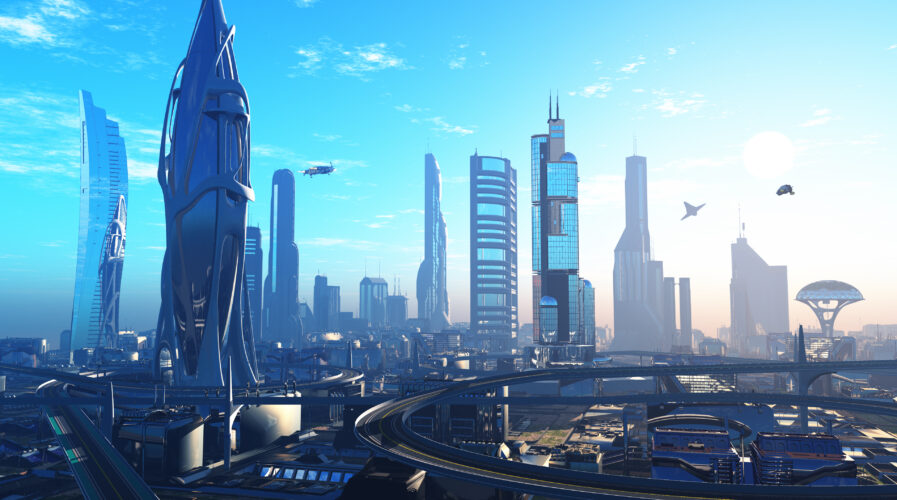
Trend Micro predicts cybersecurity for the year 2030
While most tech companies have been announcing predictions for 2022, Trend Micro has gone a step beyond. In fact, they cybersecurity company recently released a visionary new report and video dramatization articulating how the world might look at the start of the next decade, including how the security sector might respond to evolving cybercrime innovation.
2030 may still be several years away, but for companies like Trend Micro, the next few years will be critical in shaping the technologies that will make the future a reality. This year, the introduction of the metaverse has already made many pondering how exactly the future will be as more emerging technologies enable endless possibilities.
Looking at the cybersecurity industry, threats are only becoming more sophisticated and advanced every year. So its not surprising that by 2030, Trend Micro’s Project 2030 predicts that while connectivity impacts every aspect of daily life, on both the physical and psychological levels, malicious threat actors will evolve to use and abuse technological innovation – as they always do.
According to Goh Chee Hoh, Managing Director for Malaysia and Nascent Countries at Trend Micro, Project 2030 is not a definitive vision of what will be, but a thought-provoking take on what could be. It details a future that is plausible based on current technology and trends.
“We hope this possible future will spark a debate within the security industry and wider society. Only by carefully anticipating future scenarios can we offer governments, businesses, and individuals a way to prepare for the cyber challenges of the coming decade,” added Goh.
The report looks at the world in 2030 through the eyes of a fictional citizen, a business, and a government. But the interesting takeaways from the report is how it predicts cybersecurity in the future.
Among the predictions are:
- AI tools democratize cybercrime on a whole new scale to individuals with no technical skill – this is already happening now and would possibility only get more advanced in the future, especially with advancements in AI.
- Attacks cause chaos with supply chains and physical harm to humans through their cyber-implants – while cyber implants is still relatively new, supply chain attacks are a stark reality of a serious problem in the future.
- Social engineering and misinformation become more visceral and harder to ignore when delivered via ubiquitous Heads Up Displays (HUDs) – advancements in the metaverse and similar concepts will surley contributed to a new form of cyber-attacks.
- Massive IoT (MIoT) environments attract sabotage and extortion attacks targeting manufacturing, logistics, transportation, healthcare, education, retail, and the home environment – the last two years so high adoption of IoT devices, with the technology improving, opportunities for cybercriminals will increase as well.
- AI-powered obfuscation makes attribution virtually impossible, pushing the security industry’s focus towards incident response and IAM at the edge – the edge will surely be where all the action takes place eventually.
- 5G and 6G connectivity everywhere drive more sophisticated and precise attacks – probably the biggest concern from this would be what happens to data privacy.
- “Everything as a Service” turns cloud providers into hugely lucrative targets for cyber-attackers – its already happening and may only get more serious even before 2030.
- Grey markets emerge for those that want tools to confound workplace monitoring – another big concern on privacy and work life balance will be questioned.
- Techno-nationalism becomes a key geostrategic tool of some of the world’s most powerful nations, with the gulf between them and the have-nots widening further – nation state hackers are getting braver, especially with more support pouring in from their nations as well.
For Dr. Victoria Baines, a cybersecurity futurist, the exponential growth of modern technology has brought abundant future possibilities, along with cybersecurity challenges. She believes these scenarios and their associated threats will require changes to the business and regulation of cybersecurity. As such, the cybersecurity industry must evolve both technology and training to prepare for a future in which everything is connected and at risk.
While if it is uncertain if cybersecurity in 2030 will be as predicted, the reality is, cybercriminals will be ever present and continue to cause problems for everyone in the future as well.
READ MORE
- Ethical AI: The renewed importance of safeguarding data and customer privacy in Generative AI applications
- How Japan balances AI-driven opportunities with cybersecurity needs
- Deploying SASE: Benchmarking your approach
- Insurance everywhere all at once: the digital transformation of the APAC insurance industry
- Google parent Alphabet eyes HubSpot: A potential acquisition shaping the future of CRM


